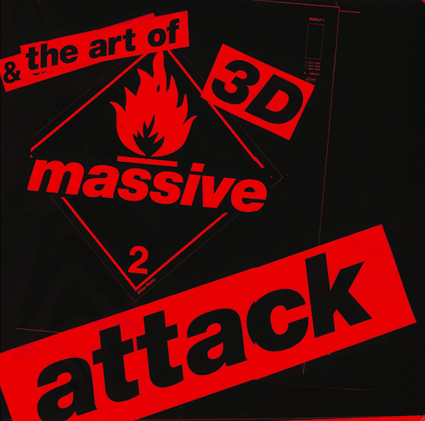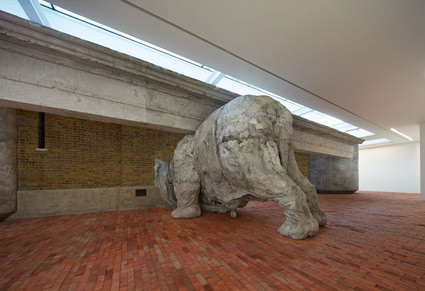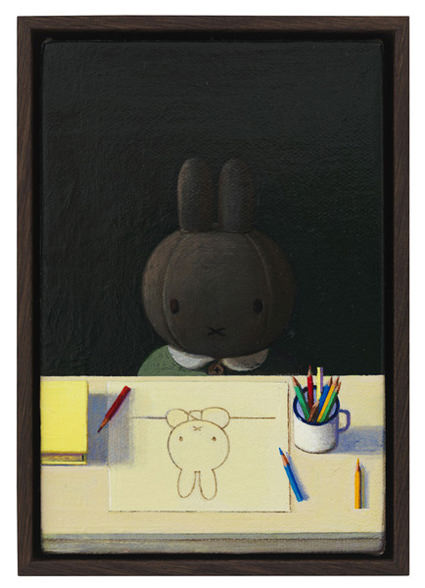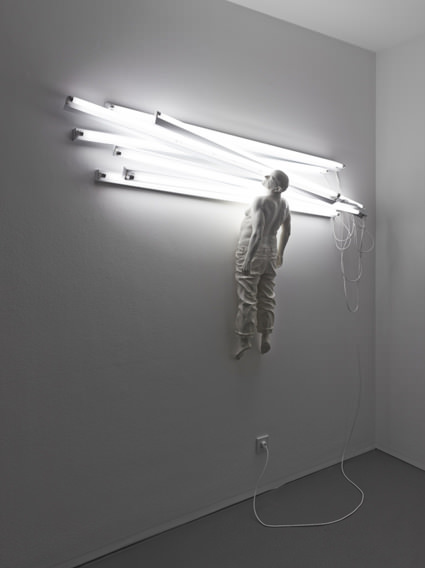Posted on
2013-10-07
The tenor of the exhibition is set by a life-size figure, blocked in with his hands tied behind his back, trying, like a symbol of a singular purpose, to lick a light bulb and to energize the empty space around the spectator’s body. Another smaller figure, in a desperate attempt to smell the light, is crushed by a cascade of fluorescent light. There no longer is a place for the image to adapt to the eye, everything rushes towards an internal abyss.
Since the end of the 80’s, Bernardí Roig has been unfolding the disturbing experience of obsession. On occasion, his works have a reflective quality, trapping and deforming our image or placing us on the other side of a theatrical scene waiting for its characters. The scene is always difficult, frozen or pierced by an artificial light.
All the work developed by Bernardí Roig over these years has been produced in the shadow of two questions that are essential to him: how to deal with inherited iconographic repertoires and how to continue to create a persistent image, an image that hurls us towards a psychic precipice, in a world overflowing with images. His work, greatly influenced by literature and cinema, follows a path marked by the narrative and a theatrical approach to space.
The exhibition aims to formulate a reflection on the nature of collective perceptions in an era strongly marked by the domination of the media and the virtual world, which, with the overload of hyper-codified messages, surpasses the individual’s threshold of endurance. The endless flow of media signals has established the supremacy of language over the authenticity of experience and, with an excess of information, has hidden that which by its very nature cannot be spoken: the primary drive that inhabits the very basis of awareness. If reason is the expression of language, then pantomime is the expression of the body.
Exhibition runs through to October 12th, 2013
Galerie Stefan Röpke
St. Apern-Strasse 17-21
50667 Cologne
Germany
www.galerie-roepke.de



